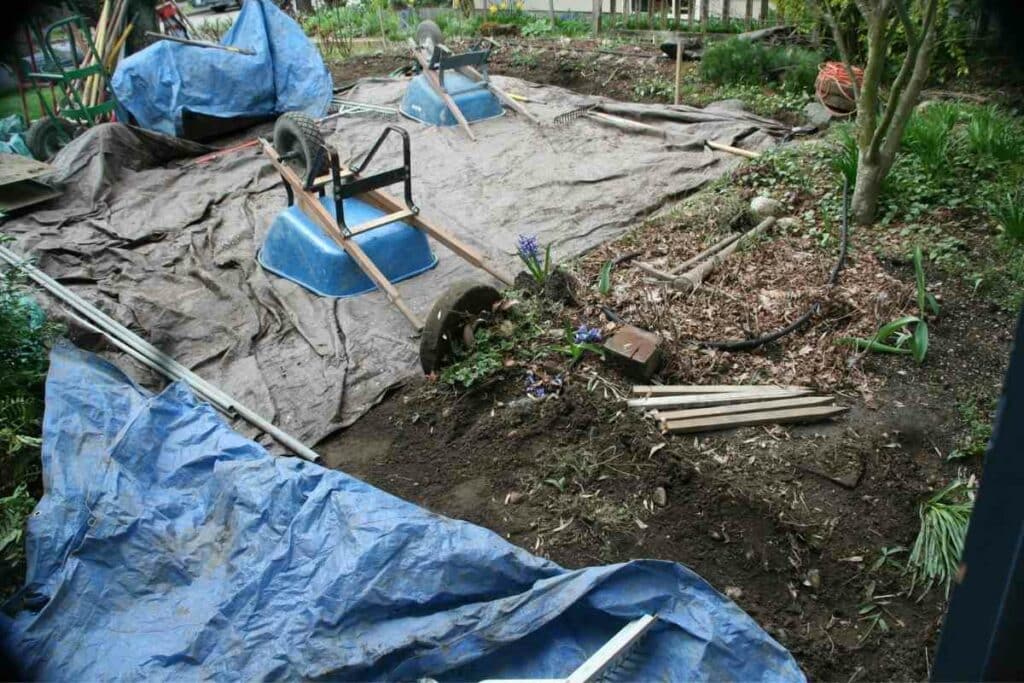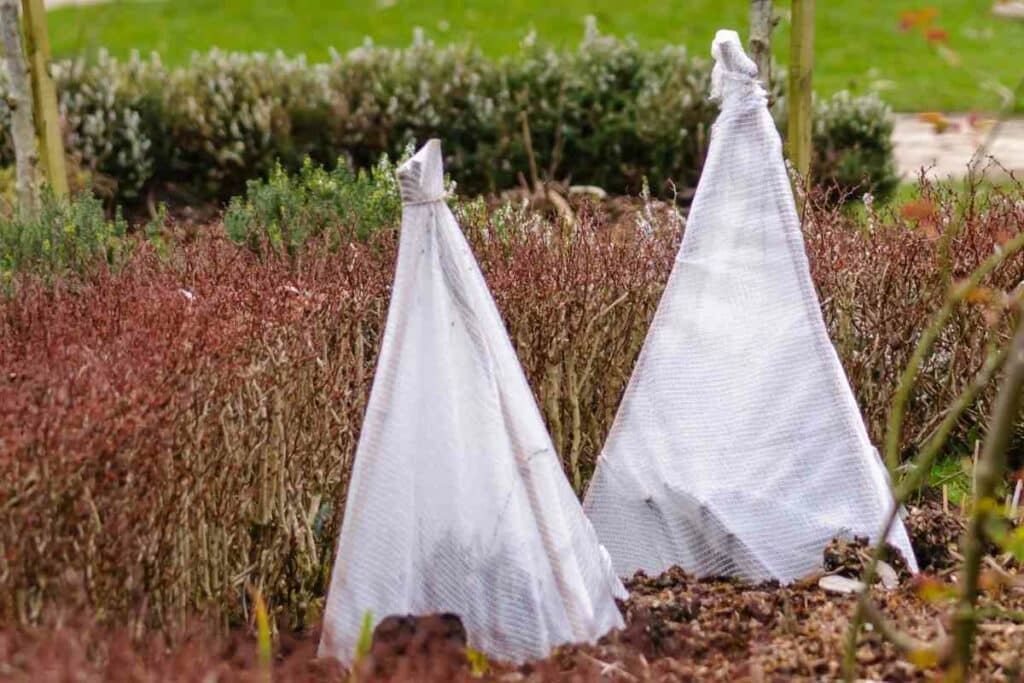We all want a full year’s supply of garden produce.
However, it isn’t easy to cultivate the whole year, especially in winter.
Although some plants can withstand the harsh conditions of the cold season, most crops hibernate or die.

It is essential to take precautionary measures when the cold weather sets in.
Some gardeners apply mulch to provide warmth to the plant, while others use synthetic fabrics.
Whatever you use, ensure that it does not encourage the growth of weeds and the spread of diseases.
Should I Cover My Garden In The Winter
There are many long-term benefits that come with covering your gardens in winter, especially if you live in places that experience snow.
Covering creates an external microclimate that captures heat and therefore protects your plants.
The plants also require energy to carry out metabolism. A healthy plant is more likely to survive a harsh winter than a weak one.
In any case, frost is a significant challenge for gardeners, and in most cases, it kills the plants.
Even if you apply frost-resistant treats, if your plant is not healthy, it will not survive the frost damage, especially in a harsh winter.
As such, covering materials are essential during the winter period.
Nonetheless, it would be best to be careful when using these covers, especially during the daytime.

This is because plants require natural sunlight for photosynthesis; if covered, your plants may not be able to make their own food, and in the process, they may die.
Apart from covering your plants ensure you take other precautionary actions to ensure the roots remain healthy.
For example, ensure that the soil is well drained and aerated so that the roots will remain active even if the plant goes into dormancy.
Additionally – By covering your garden, you can easily control notorious pests such as cabbage warms and flee beetle. Also, wild rabbits and squirrels cannot harm your crops if you use proper covering material.
However, remove the cover during the daytime so the crops can enjoy the sunlight.
Also, remember to check the USDA zones when deciding the plant to plant in your garden.
What Are The Different Types of Covers For Your Garden
Several materials and plants can be used when covering your garden during winter.
However, choose a material that will provide the necessary warmth and will not encourage the growth of diseases and pests.
Some of the different materials you can use include the following.
Burlap
Burlap is a natural fiber that provides cover for hardy plants.
Also, it gives adequate shelter to young trees and shrubs.
Burlap will offer the necessary shied to your trees and shrub flowers by stiffening them and preventing breakage even when the winter conditions worsen.
Polypropylene fleece
Polypropylene fleece often referred to as fabric cover, offers protection from frost and can easily be purchased from your local gardening store.
The fabric is lightweight and blends well with most gardens.
Since it provides a light shade, it does not encourage the growth of bacteria and rot.
Also, it is breathable, allowing the soil to take in necessary nutrients without much stress.
Plastic
Many gardeners use plastic, but it is not the best option. However, plastic is not breathable and often traps moisture.

Although plastic is very good at maintaining heat due to the greenhouse effect, it requires more maintenance and care.
However, plastic covers can help you deal with the night frost if you have small elevated beds.
One example of such plastics is polyethylene sheets. This is among the most affordable and available methods to cover your garden during winter.
Also, you can build a mini greenhouse with polyethylene sheets and enjoy a fresh supply of vegetables during the winter.
Cover Crops
If you live in cold regions where the temperatures drop below freezing points, plant tall fescue grass in your garden.
The tall grass will shield your plants from strong winds and may provide some warmth for your plants.

If you have a big garden, plant the grass in a row so that it may not interfere with the growth and development of the plants in your garden.
Household Items
You can use what is available on your homestead to cover your plants.
It is that easy. If you are on a budget, you do not need to purchase expensive materials.
For Example – You may even use old sheets to cover your raised garden at night. The aim is to prevent your crops from frosty weather.
You can also use shade cloth. Most people do not appreciate the use of shade cloth.
However, it is among the most inexpensive and efficient ways to protect crops during winter.
Row Covers
This lightweight cover is often applied on rows to shield your plants from frost.
They come in various sizes depending on the size of your garden. Most cases are classified as light, middle, and heavyweight.
However, if you live in a place with adequate sunlight, ensure to use the light version of the cover. Use the heavyweight cover in snowy areas to provide the appropriate insulation.
Final Thoughts
Our gardens do not look as pleasing in the winter as in spring or fall.
However, that does not mean we should not grow crops during the cold season. We need to embrace routines that will ultimately help us maintain and have substantial produce.
Covering our gardens is among the many practices a gardener should do in winter.
Ensure your beds are raised to improve the soil drainage when you cover. You might be surprised how a healthy plant can survive harsh winter conditions.


